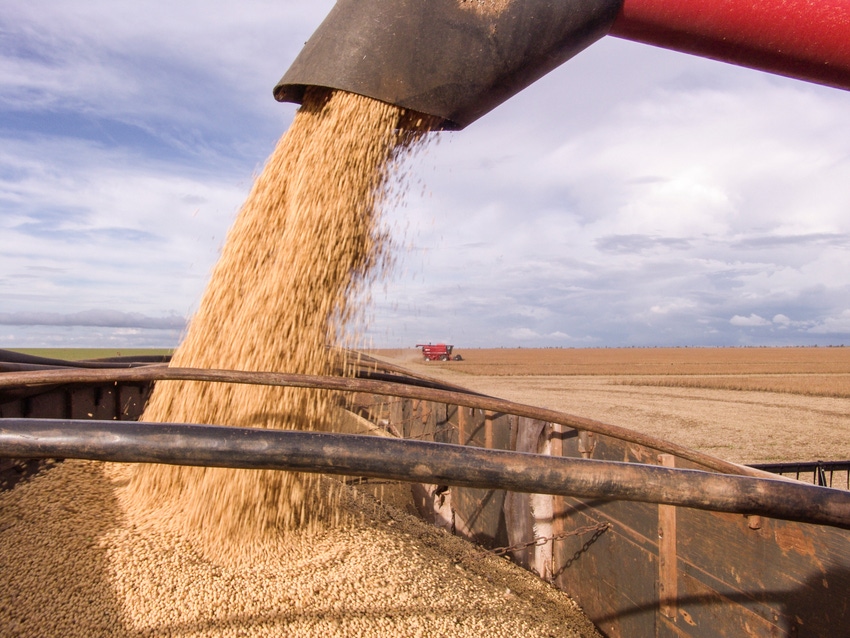Trade issues, tariffs provide plenty of fodder to change U.S. agriculture picture.

In the last couple of years, the U.S. Department of Agriculture (USDA) has provided an early look at their projections for the next crop year. While these early projections typically hold close to the current situation, Chad Hart, agriculture economist at Iowa State University, said that is not the case this year.
“Given the trade dispute with China and the lingering tariffs between the U.S., Canada, and Mexico that were not part of the USMCA, there are plenty of items to create significant movements in U.S. agriculture. And, the analysts at USDA expect U.S. farmers to make sizable adjustments to their land allocations in 2019,” Hart noted.
Data suggest U.S. farmers are expected to back away from soybeans significantly next year, losing 6.6 million acres in 2019 and reversing the strong recent uptrend in soybean area over the past few years. Much of that decline is coming from the Great Plains, with the largest gain coming from wheat area, as 3.2 million acres are shifted to that crop, Hart said.
Corn is also expected to capture some of soybeans’ loss, adding 2.9 million acres.
Hart said cotton, rice, and sorghum are each expected to lose area as well—less than 500,000 acres in each case—while barley and oats are expected to gain some marginal area.
“Overall, planted area among the eight major crops is set to fall by a million acres, as the wheat and corn gains do not offset the soybean loss,” Hart said.
Going a little deeper into the numbers, he said USDA is painting a better outlook for corn than soybeans.
“While corn plantings are expected to be higher, the rest of the projected balance sheet provides a generally bullish outlook.”
With the trend yield set at 176.5 bushels per acre, the acreage increase is partially offset by a drop in yields; however, Hart said that overall corn production is set to increase to 14.93 billion bushels.
“That would be the second-largest corn crop ever, trailing only the 2016 crop," Hart said. "However, with ending stocks declining over the past couple of years, total corn supply is projected to be nearly 200 million bushels for the 2019 marketing year. So, the 2019 outlook is for slightly less corn.”
Shifting to corn usage, the general storyline continues the positive trend over the past few years, with feed and residual usage expected to climb slightly, according to Hart.
Corn usage for ethanol is expected to peak at 5.7 billion bushels, and food, seed, and other industrial uses are expected to increase by 10 million bushels. The only spot with lower usage is in exports, but the projected level is still at a very strong level, 2.425 billion bushels, Hart said.
Totaling it up, 2019/20 ending stocks are projected at 1.6 billion bushels, down 200 million from 2018/19. Smaller stock levels generally go along with higher prices, which Hart said is what USDA projects.
USDA’s 2019/20 initial season-average price estimate stands at $3.90 per bushel. This would be 40 cents higher than the current estimate for 2018/19, which Hart said would be the highest average price since 2013/14.
The projected soybean area is the lowest since 2013, but Hart said the drop in acreage is not projected to be enough to dramatically change the soybean market.
“Given a trend yield of 50 bushels per acre, U.S. soybean production is set to fall by 600 million bushels. But that still works out to be a 4-billion-bushel crop. So, that’s four 4 billion bushel plus soybean crops in a row.”
The build up in ending stocks over the past few years pushes total soybean supplies to an even 5 billion bushels, the second-highest level ever, he added. “So, we have tremendous supplies once again.”
According to Hart, that increase in stocks also shows that while soybean usage has been strong, U.S. production has been even stronger.
USDA estimates there will be little change regarding soybean usage. Domestic crush is set to grow slightly while seed and residual usage falls slightly. Exports are forecast to gain a little, by roughly 15 million bushels. Combined, total usage is projected to rise by 9 million bushels, which Hart said is enough to bring 2019/20 ending stocks down but not enough to spur significant price recovery. The projected 160-million-bushel drop in stocks translates into only a 15-cent rise in the season-average price, he noted.
“With the 2019/20 season-average price at $8.75 per bushel, the economics do not look very good for the crop.”
When comparing the 2019 projections to USDA’s long-term projections from last year, Hart said there is a stark contrast between the two outlooks, a result of the impacts from the 2018 trade issues.
Going into 2018, he said USDA’s projections for the 2019 marketing year had corn holding 90 million acres with a season-average price of $3.35 per bushel. Soybeans, on the other hand, were projected at 91 million acres, with a season-average price of $9.45 per bushel. Soybeans looked to have the long-term advantage at the start of 2018, but Hart said now corn seems to hold the upper hand.
The USDA and futures agree on the outlook for stronger prices for both crops, he said, but added that the issue returns whether price increases will cover costs.
For the 2018 crop year, ISU estimated production costs at $3.60 per bushel for corn and $9.46 per bushel for soybeans. The outlook for 2019 production costs is for steady to slightly rising costs, as fuel, fertilizer, and chemical cost increases may likely offset any downward adjustment in rental rates.
“Comparing the projected prices to the 2018 costs, the USDA and futures projections tell a consistent story. Corn is projected to cover costs, but soybeans are not. And 2019 looks to be another challenging year for farm income,” Hart said.
About the Author(s)
You May Also Like

.png?width=300&auto=webp&quality=80&disable=upscale)

